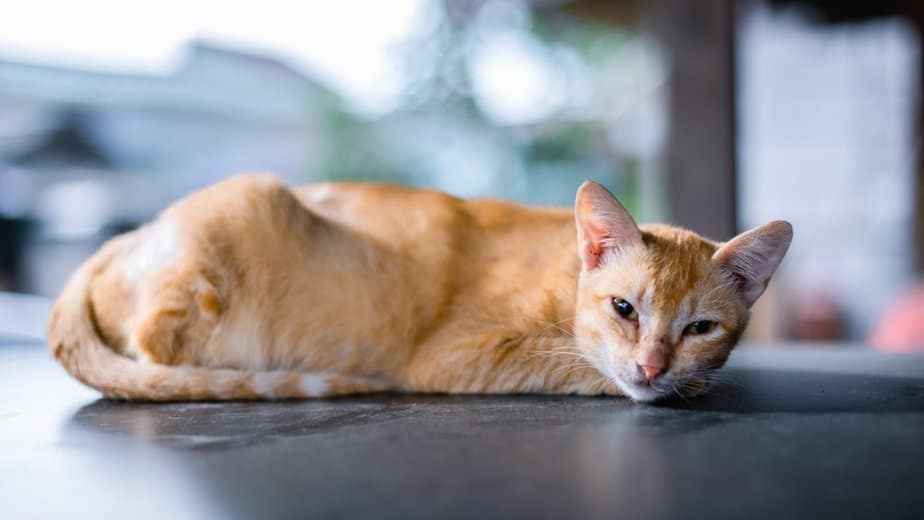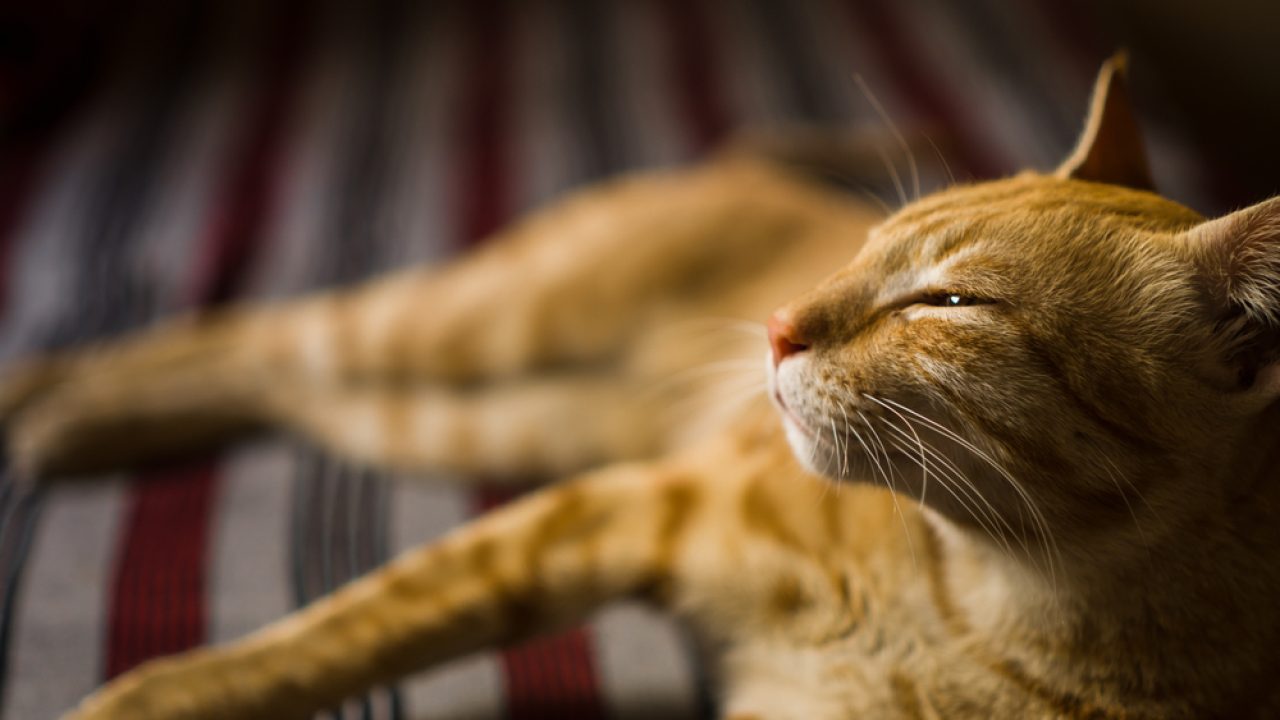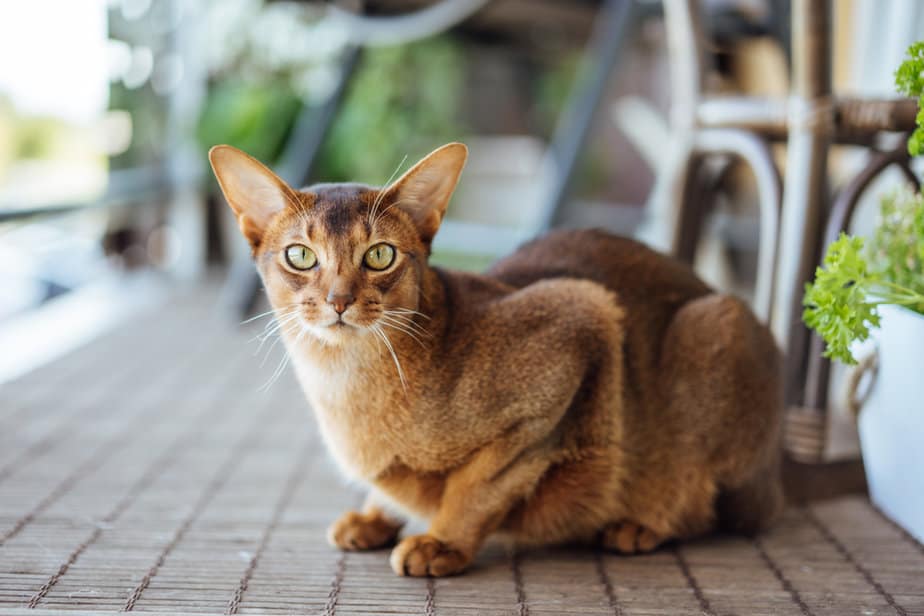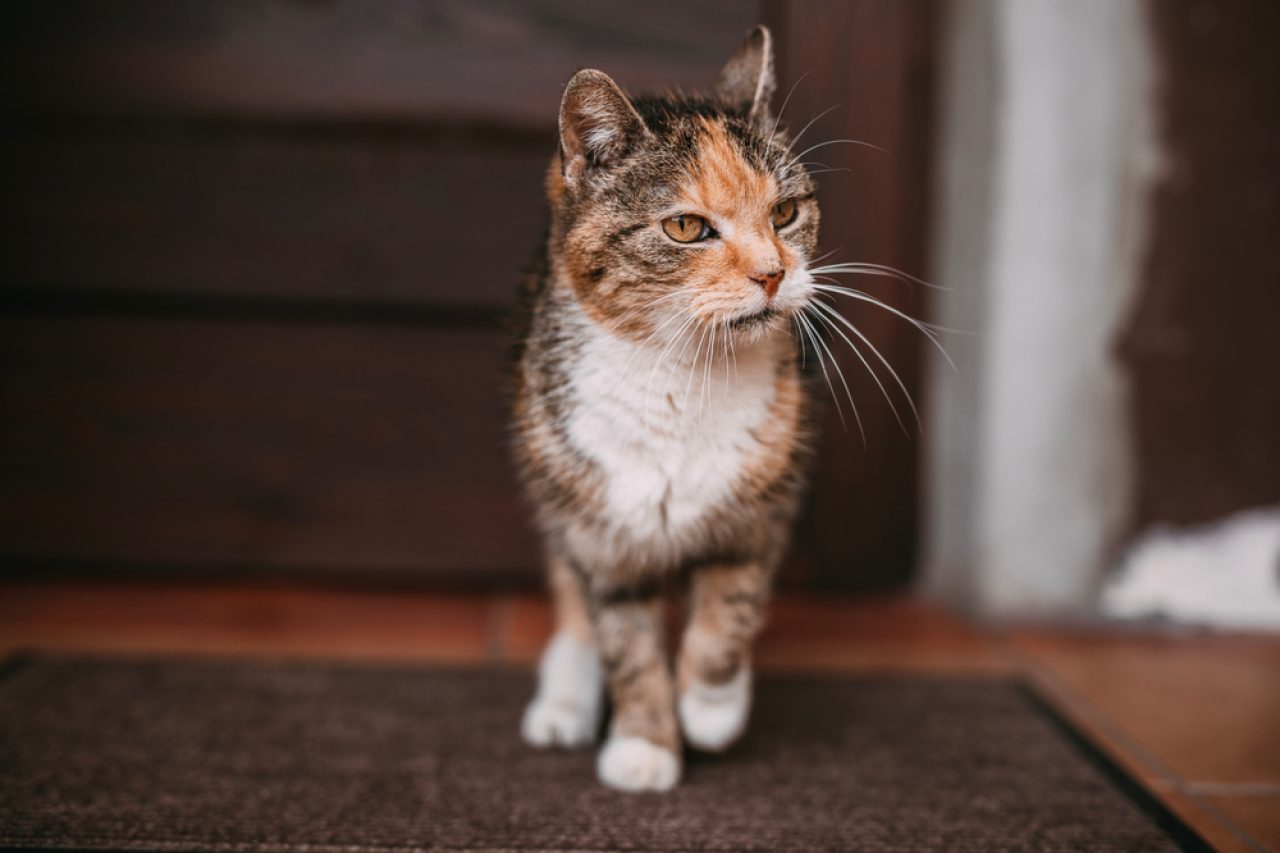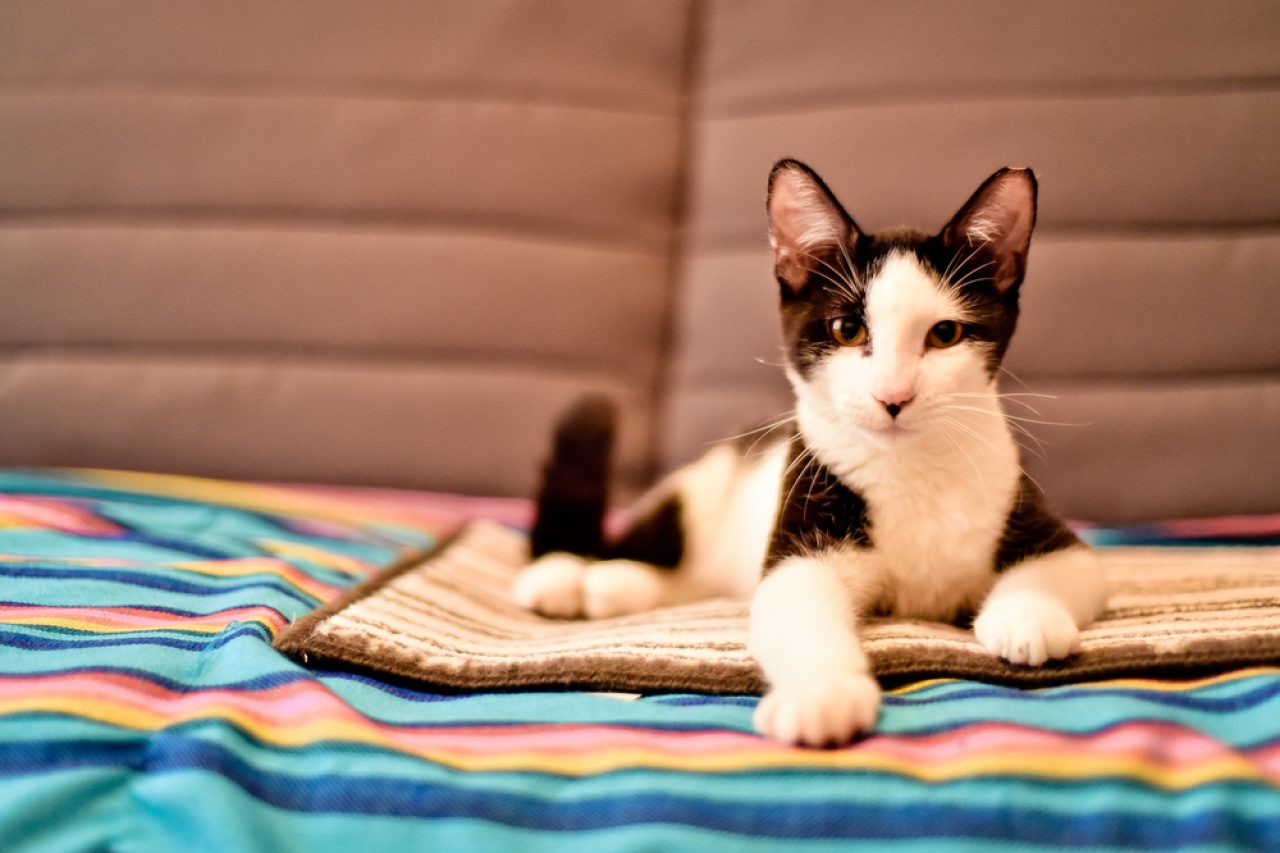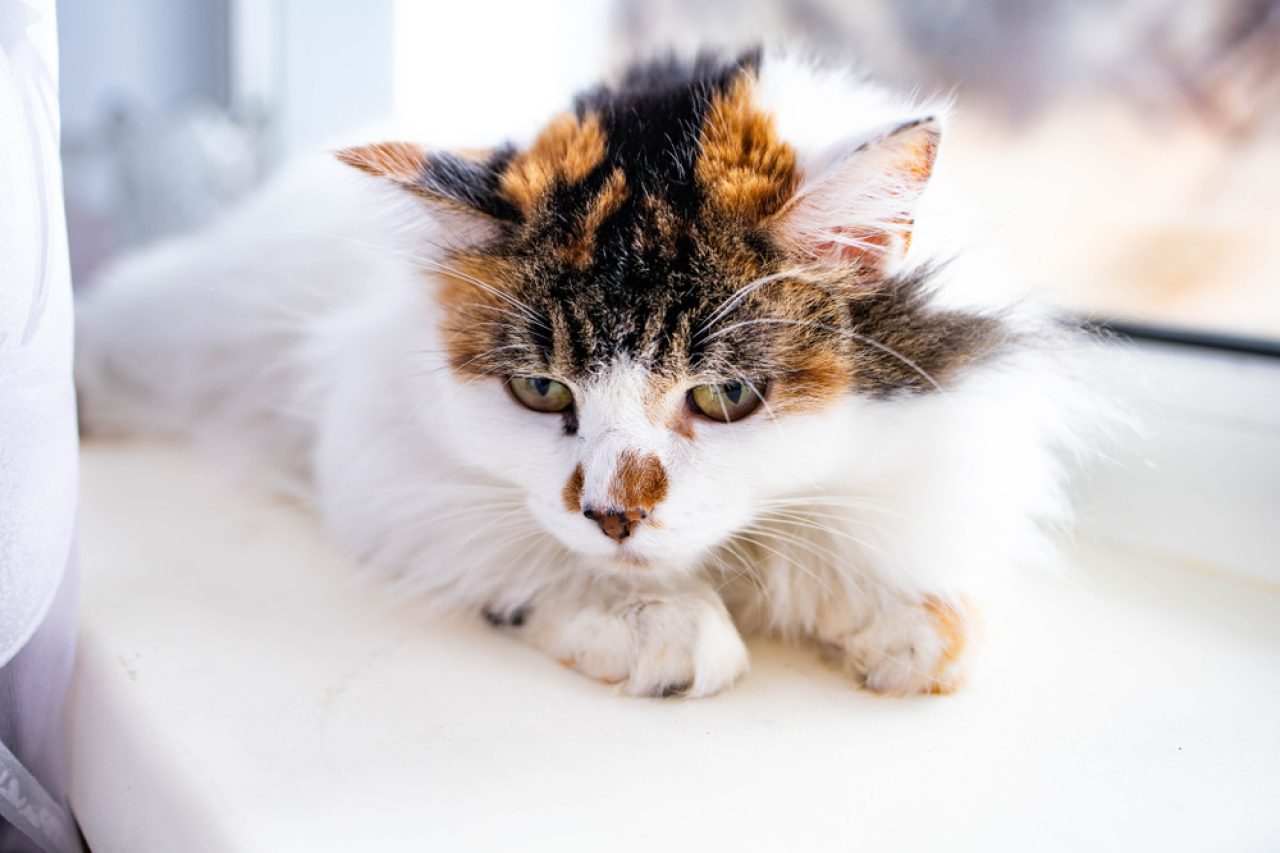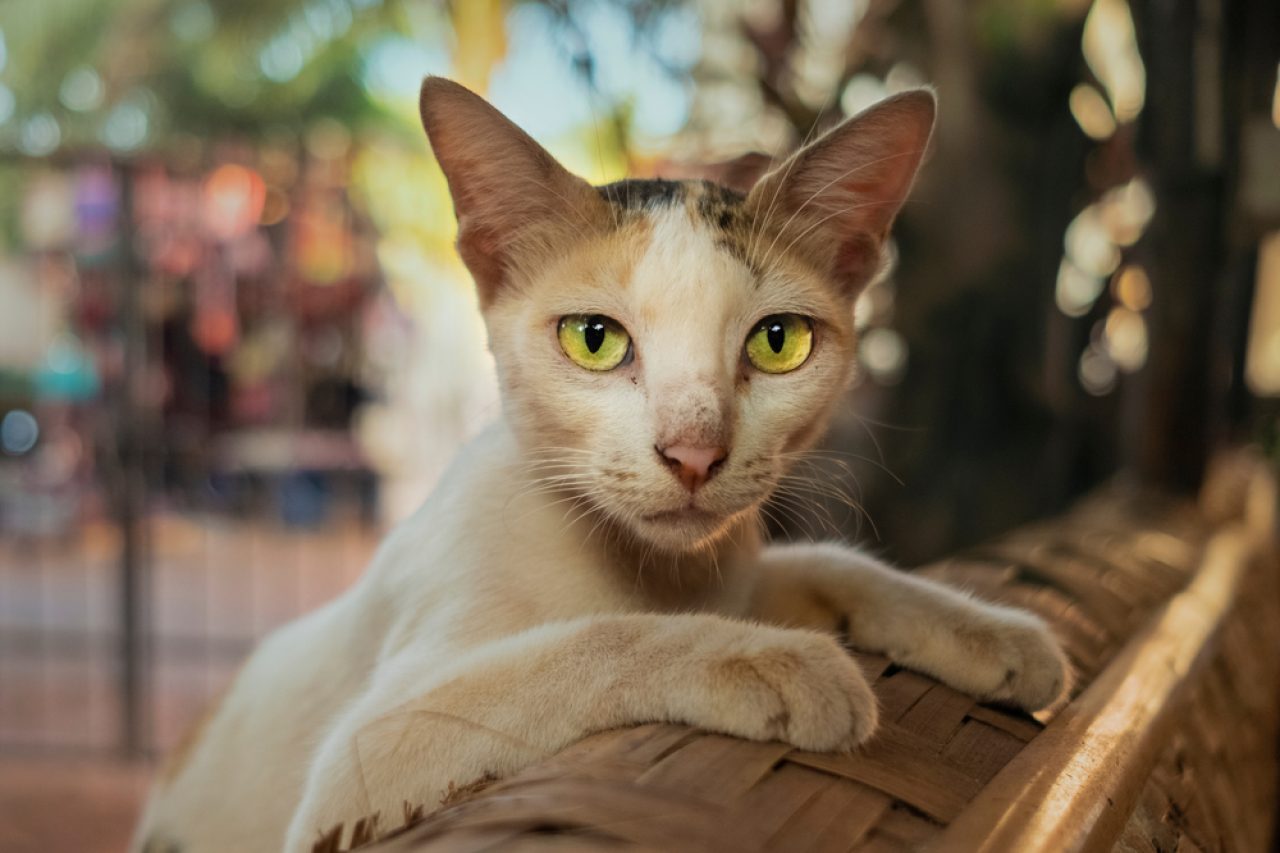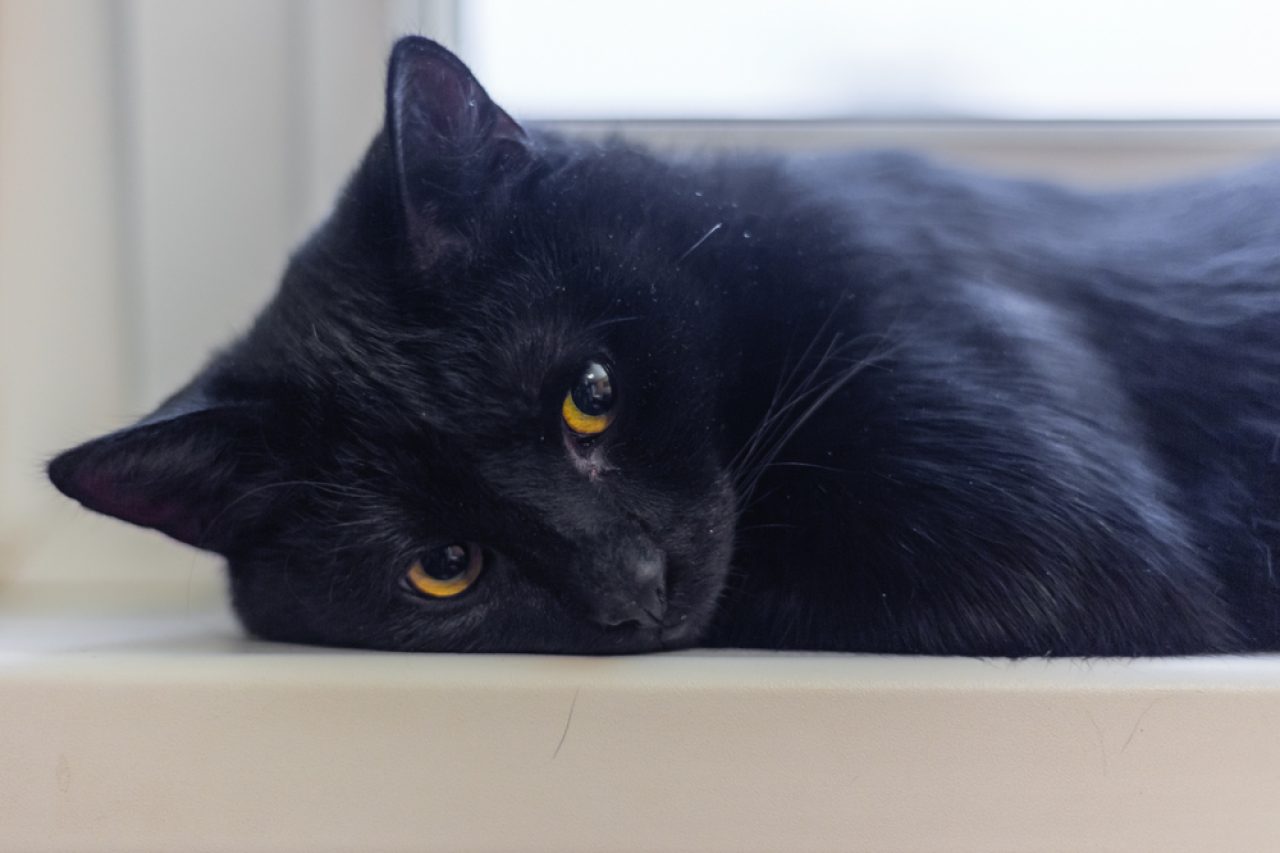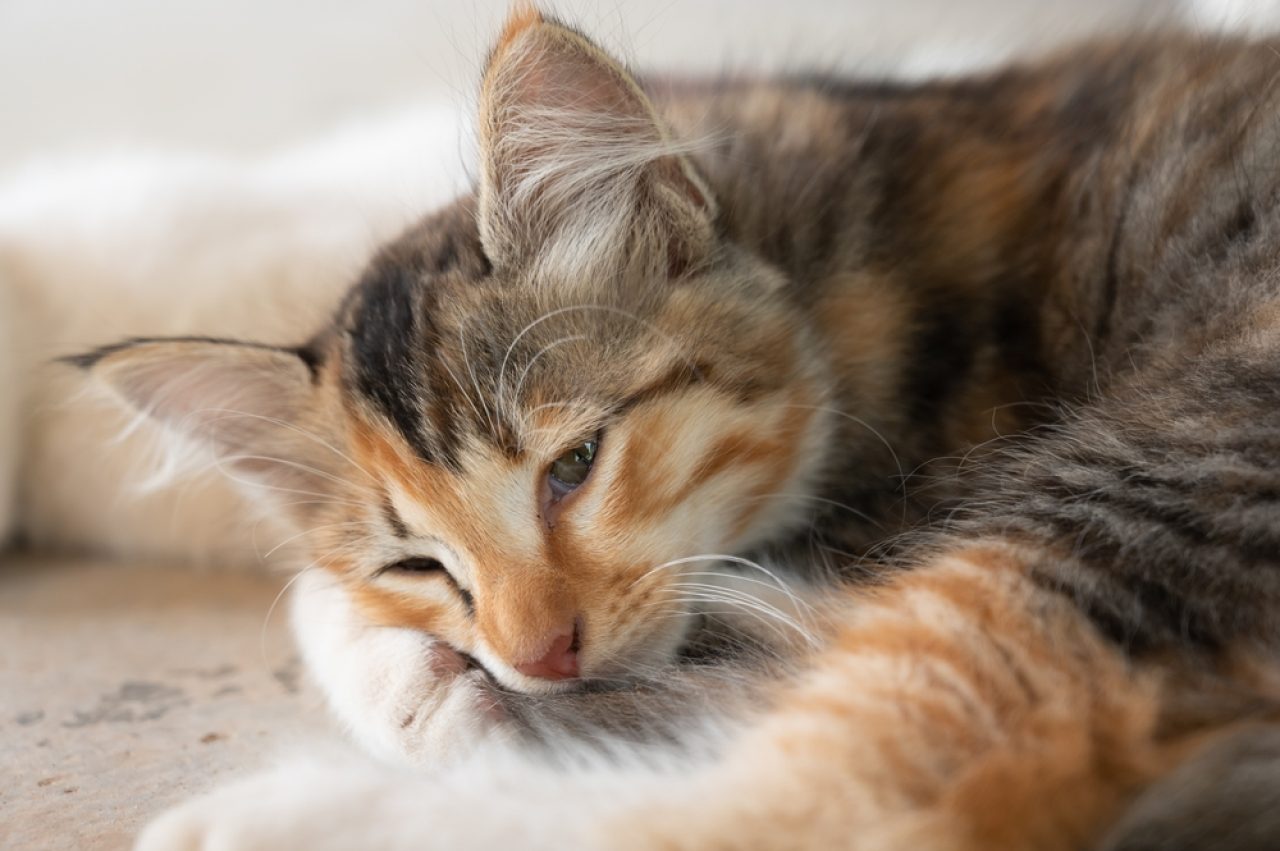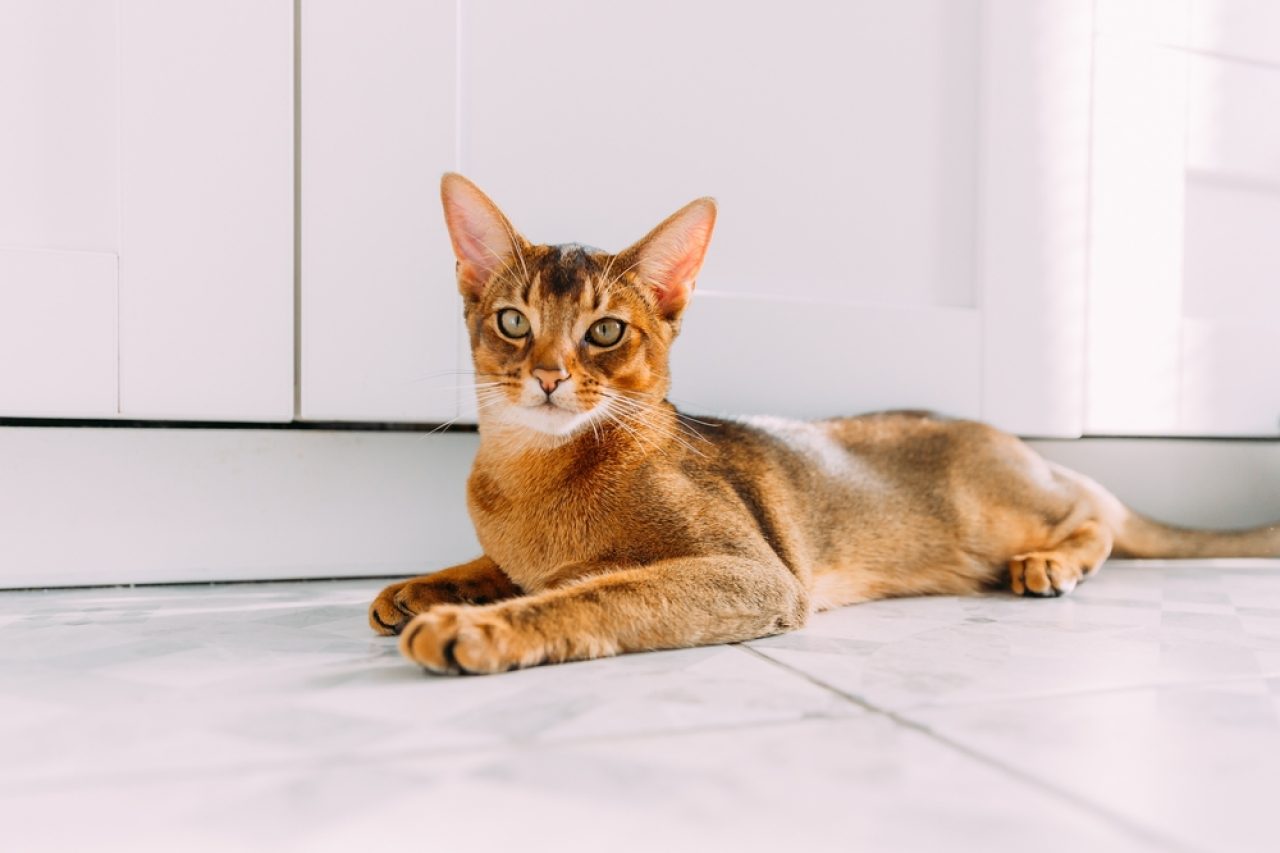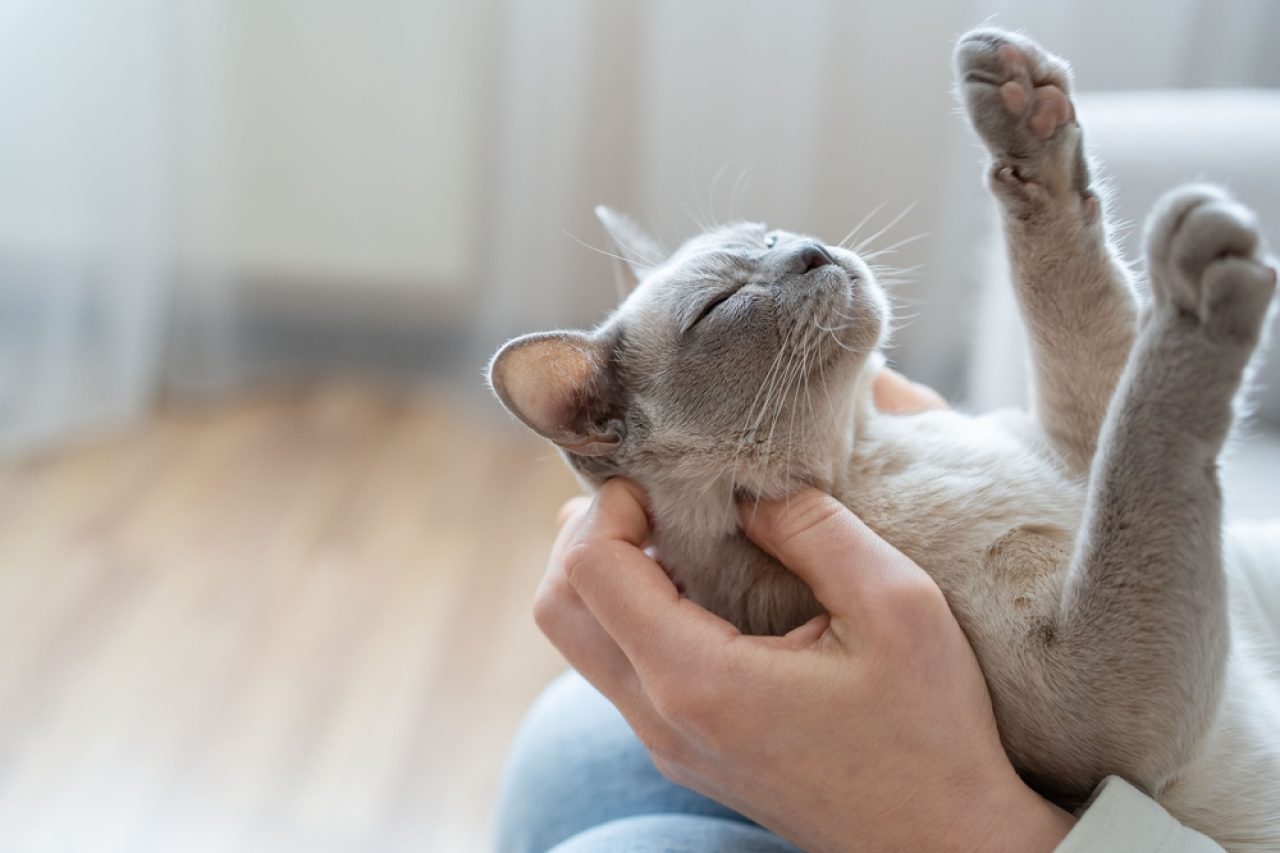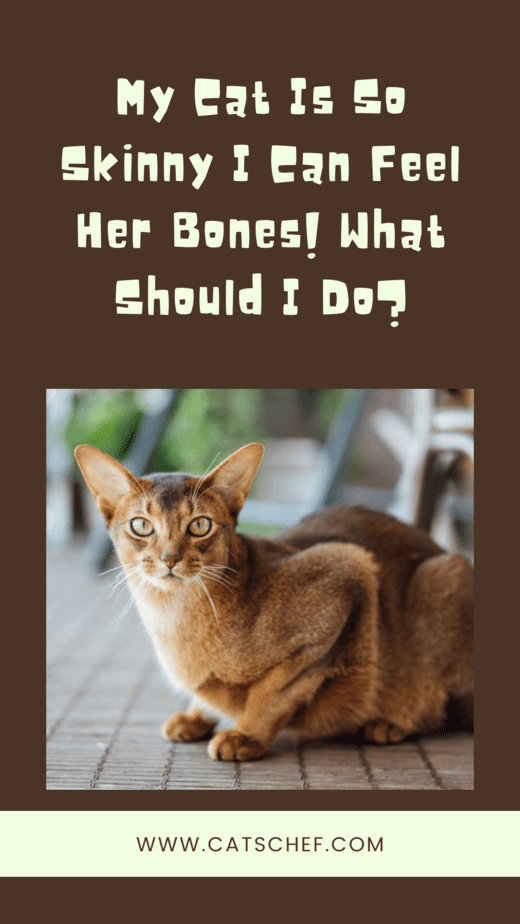📖 Table of Content:
“OMG! My cat is so skinny I can feel her bones! What on Earth should I do?”
These might be your exact thoughts if you’re unfortunate enough to be dealing with this type of situation. It’s not pleasant at all to hug your kitty and feel her rib cage and her spine. That’s not what any cat parent has in mind when he imagines his purrfectly healthy feline.
Let’s be honest for a second: we all love a chunky cat! That’s mostly the reason why we enjoy feeding them delicious treats. We love to see them munching on their meal, happily licking their mouths and purring upon finishing.
Food is essential for any kind of relationship, even between humans and their pets. It is a miraculous ‘binding agent’ which ensures we stay satisfied, connected, and appreciated by each other.
And surprisingly enough, even cats understand that! Forget to feed your cat at her usual meal time, and you’ll feel her dissatisfaction. Continue to give her delicious food and surprise her here and there with yummy treats, and voilà – you’ll get all the love and cuddles you could wish for!
I’m not trying to say that cats are with you just for their own benefit (although many people believe it to be true) and that you’ll receive their love only when you feed them, but food does help us gain their love and trust.
However, some kitties, due to various reasons, don’t respond to food the “normal” way. We are well aware that strays are oftentimes malnourished and don’t receive the right amount of food they need. But, why are some indoor felines underfed?
If you’ve noticed your cat has changed her eating habits and her bones are starting to show off, don’t worry. This article will give you all the information you need.
My cat is so skinny I can feel her bones! Should I panic or?
Many people are aware of obesity in cats and what overeating can cause to their little furry health. But, cats’ health can go the opposite side of the spectrum, too, and they can suffer from severe undereating. Both states can cause some serious (and undesirable) medical conditions.
It’s important to remember that cats are normally slim and fit creatures and that being skinny is their natural state. Many breeds like Abyssinian, Cornish Rex, Lykoi, or Sphynx remain slender their entire life, which doesn’t mean that there’s something wrong with them. That’s just the way they are!
So, it’s pretty normal to feel your cat’s bones, and it should be concerning when you don’t feel any. Some studies have shown that approximately 60% of cats in the USA are actually overweight which is a significantly high percentage.
Therefore, if your kitty is skinny, and you can feel her bones, especially if she’s a short-haired queen, there’s probably nothing to worry about!
However, we cannot help but wonder, “How skinny is too skinny?” There has to be a bottom line somewhere, right? And that’s correct. Your cat shouldn’t be extremely bony since that’s an indicator that something’s wrong with her.
First thing first: feel her bones!
“My cat is so skinny I can feel her bones! They are overly protrusive and feel like my knuckles when I pet her. Should I worry?”
My friend asked me this question a few weeks ago. Her newly adopted cat was a skinny stray from the beginning. She fed her many delicious cat foods, but she never seemed to manage to put on some weight.
If you are going through a similar situation, here’s what I told my friend to do and what you should do as well. Feel your kitty’s bones. But really feel them! Pay attention to how they look and feel under the palm of your hand. If they, as my friend said, feel like knuckles, that’s a sign she’s extremely underweight.
A thorough bone test can tell you everything! With your hand, track the length of her spine up to her tail and notice if her bones are too “bony” and prominent. Also, take a look at how narrow her waist is and how visible her ribs are. These are all visible signs of your cat being too skinny.
Why is your cat so skinny? 10 possible reasons
Now that you’ve done the bone test and are thinking to yourself, “Okay, it’s verified now. My cat is so skinny I can feel her bones like knuckles under my hand!” we can move on and unravel the reasons behind her condition.
But before we continue, a quick disclaimer: It’s never advisable to play doctors and vets. If you’re afraid your kitty is suffering from some serious medical issues, please take her to the vet first and let him determine what’s wrong with her (if anything).
More often than not, we tend to overly rely on the Internet in hopes it’ll magically resolve all of our problems. While pieces of information found online can significantly help us, you should consult your vet as soon as possible. That’s the only right way of taking care of your feline buddy.
1. Your cat is getting older
To address your issue, we’ll start with the most probable cause. Your cat is simply getting older.
It’s normal for cats to start losing weight as they approach their senior years. This happens because, with age, their appetite gets reduced, and they’re not active as they used to be. The lack of energy spent will inevitably result in a decrease in food consumption.
Consequently, the lack of movement and exercise and the reduction of food intake will cause cats’ muscles to atrophy. All of this adds up to their thin and bony appearance. There’s little you or the vet can do in this case. This is part of their natural aging process, and it’s pretty much inevitable.
However, you can still take your kitty to the vet to either determine or rule out some other, more serious medical conditions. As your cat ages, she’ll be more prone to various diseases, many of which can cause weight loss. I’ve covered some of them below so make sure you continue reading.
2. Maybe she’s lacking some nutrients
If your cat is so skinny you can feel her bones, it might be because she’s not receiving enough nutrients she needs.
This can happen due to many reasons, one being the fact that your cat is a proud member of the fussy eaters club. If you’ve suddenly switched to a different food brand, it has to be exceptionally good and yummy for your cat to eat it.
But, even if she eats all the food you give her, it doesn’t mean it contains all the necessary nutrients. Therefore, make sure you check what the food you’re giving her contains and research what nutrients the breed your cat belongs to needs.
Another reason is that someone’s stealing your kitty’s food. This is common for multi-cat homes. If you’ve noticed one of your cats became overly skinny, pay attention to how other cats are treating her. Try separating their food bowls, so they don’t come in contact with each other when they’re eating.
3. She could be having some dental issues
Dental issues are another common reason why cats refuse to eat and therefore excessively lose weight. Those can include a cavity in one or more teeth, inflammation of their gums, gingivitis, or periodontal disease. Even a small oral injury can result in them losing their appetite.
Any type of dental issue causes some level of pain to your kitty which makes it hard for her to chew food and consequently results in weight loss. Aside from this, there are other symptoms you should pay attention to, like bad breath, pawing at the teeth or mouth, excessive drooling, etc.
Take your cat to the vet to determine what type of dental problem she’s dealing with. When the issue is disclosed, necessary steps are taken, and the recovery is ongoing – make sure you serve your cat only soft food. This will be a lot gentler on her teeth and therefore easier for her to eat.
4. She’s dealing with feline anorexia
Believe it or not, there’s a thing called feline anorexia. This eating disorder is not reserved just for humans but can affect our furry companions as well.
Generally speaking, anorexia refers to the decrease or loss of appetite for food. It’s important to highlight the term appetite in our heads because it is different from the term hunger. While hunger is physical, appetite is mentally driven.
Loss of appetite should be taken seriously as it can be an indicator of some serious and possibly life-threatening medical conditions.
Feline anorexia can be divided into two separate categories:
- True anorexia – a condition where a cat has no desire to eat and therefore doesn’t.
- Pseudo-anorexia – a condition where a cat wants to eat and is hungry, but due to some other conditions (for example having trouble chewing, picking the food up, or swallowing it), cannot eat.
There’s no need to be overly negative right off the bat. Maybe your kitty is being too fussy and finicky and refuses to eat the dry food you serve her. Or she simply doesn’t like the less expensive cat food you recently switched to. (Yup! She noticed!)
However, if your cat is refusing to eat but is otherwise acting normal, she might be dealing with feline anorexia. The first step in diagnosing decreased food consumption is to determine whether the cat has true or pseudo-anorexia.
This is something you should never guess on your own, and it’s something that requires immediate veterinary help.
5. Your kitty has parasitic intestinal infections
You might not be aware of this, but the frequency of feline parasitic intestinal infections is as high as 45%. So, this is a very common problem our fluffy friends have to deal with.
There are two different types of intestinal parasites in cats:
- Wormlike – this includes stomach worms, roundworms, hookworms, or tapeworms
- One-celled – this includes Isospora, Giardia, or Toxoplasma.
Wormlike parasites are the most common and most likely to cause weight loss in cats. These parasites live in the intestines and either feed on the nutrients a cat consumed through food or on the cat’s blood.
Because of this, your cat can have a loss of appetite, can start to vomit, and have diarrhea, or other symptoms, including being overly skinny and bony.
6. She might be having hyperthyroidism
Hyperthyroidism is a hormonal disease that refers to the overproduction of thyroid hormones (thyroxine and triiodothyronine). An excessive amount of thyroxine in cats’ bodies significantly increases their metabolism, resulting in them burning energy and losing weight more quickly.
If you’ve noticed your kitty has a normal (or even increased) appetite but is still losing weight, or if she lost her appetite, but her thirst has increased, she’s probably suffering from hyperthyroidism.
Other symptoms of this condition include:
- vomiting
- diarrhea
- hyperactivity
- increased urination
- matted coat.
Hyperthyroidism is a curable condition, so it’s highly advisable to consult a vet to find a way to relieve her from her troubles.
7. Maybe she’s suffering from diabetes mellitus
“My cat is so skinny I can feel her bones. But, I’m not sure why is that so since she’s eating regularly and has an amazing appetite. I wonder what could be the reason behind her weight loss.”
If you can relate to these sentences, then your cat is probably dealing with a hormonal condition known as diabetes mellitus. This condition doesn’t pick favorites and can affect cats of all ages and breeds, but most commonly occurs with middle-aged felines.
Diabetes mellitus is a condition when the body stops insulin production (Type I) or can no longer properly respond to it (Type II). This hormone is important in glucose regulation and without it, blood sugar levels increase rapidly.
Like the human body, cats’ cells need glucose for energy, and glucose in the blood needs insulin which “unlocks” the door to the cells.
The way this works is that insulin attaches to cells and signals when glucose can be absorbed. As glucose is absorbed, the muscle cells, fat cells, and liver receive vital fuel while blood glucose levels are lowered.
In both, Type I and Type II diabetes, cats’ cells cannot access the nutrients they need despite the high levels of sugar in the bloodstream. As a result, their body uses their own fat supplies as fuel, which results in sudden and excessive weight loss.
A quick visit to the vet can help you determine whether your kitty has diabetes or not, so you should definitely take her for a check-up as soon as you notice her loss of appetite and bonier appearance.
8. She might be having some gastrointestinal diseases
It’s very common for cats to have various gastrointestinal diseases which can cause them a lot of trouble. Some digestive issues our furry friends can suffer from include:
- Pancreatitis: The pancreas produces enzymes that help break down food and extract nutrients. Cats with pancreatitis release these enzymes but they do it too early. Unfortunately, they end up digesting the pancreas itself, which affects its function.
- Inflammatory Bowel Disease (IBD): This condition refers to the inflammation that occurs somewhere in the gastrointestinal tract which affects the digestion process. The cause of this condition is usually unknown, and it can be triggered by both genetic and environmental factors.
- Gastritis: This is the term used to describe stomach inflammation which can be caused by various irritating factors like parasites or toxic substances.
- Irritable Bowel Syndrome (IBS): This is the term used to describe acute episodes of feline gastrointestinal distress. While the causes of IBD are typically unknown, IBS occurs as a response to various stressful events.
There are other gastrointestinal diseases that can affect our cats, as well, but these are the ones that can often lead to sudden weight loss. Other symptoms tied to these conditions include lethargy, diarrhea, abdominal pain, nausea, and vomiting.
Cats that suffer from IBD can also have pink vomit, which may be a sign of internal bleeding. None of these conditions are to be joked with, and they should be addressed by the vet as soon as possible.
9. Maybe your kitty has food allergies
We all can agree on one thing – food allergies are no fun! And they could be the main culprit why you can feel your cat’s bones.
In cats with food allergies, their immune system is reacting to a specific food which triggers an allergic reaction. Believe it or not, this usually happens after chicken, beef, fish, or dairy products consumption.
Ingesting the allergen from food makes your kitty sick, and as a result, they’ll suffer from diarrhea and vomiting. This causes her body to be “stripped down” of all necessary nutrients, which consequently, results in rapid weight loss and a bonier look.
10. Maybe she has cancer of some sort
And as it always happens, the scariest one for the last. If you’re afraid that your cat may have cancer, then I have to let you know that you, unfortunately, might be right.
Any kind of cancer will cause your cat to lose muscle mass and trigger excessive weight loss. However, the weight loss will be extremely gradual and will happen despite the fact that your kitty eats as per usual. This condition is called neoplastic cachexia.
Your cat will not lose her appetite because she needs energy from food. However, cancer is depriving her of that energy.
If your cat undergoes certain treatments, like chemotherapy and radiation, those can make her nauseous, and cause vomiting and diarrhea. These symptoms will definitely decrease her appetite and significantly accelerate her weight loss, making her look overly skinny and her bones more prominent.
Feline cancer is an emotional roller coaster, for sure. So if you are dealing with any type of it, I wish you all the fortune in the world.
What to do if your cat is too skinny?
“My cat is so skinny I can feel her bones! What on Earth should I do?!”
Calm down! There’s no need to panic. Pretty much every feline condition can be dealt with and cured if addressed on time. So before we go any further, I highly encourage you to take your kitty to the vet.
Vet visits can be traumatic for cats, that’s for sure. But, they are infinitely more helpful. If you take your fluffball regularly to the vet, she’ll probably develop a certain fancy for him and won’t mind visiting him every once in a while.
Below, you can find what are some other useful things you can consider doing.
1. What’s the food she’s eating like?
If your kitty is a fussy eater, she most definitely doesn’t like when her food stays in her bowl for too long. Instead of giving her three large main meals she can revisit throughout the day, consider feeding her smaller but more frequent portions of yummy and nutrient-packed foods.
Also, make sure her food is warm since it heightens the aroma and makes it irresistible for your kitty. You can easily microwave her food to reach an ideal temperature of 103 °F, which is around their body temperature.
Also, make sure to switch the food brand if you notice she’s not eating the one you’re feeding her at the moment. Your cat can be very stubborn – if she doesn’t like something, she won’t eat it, no matter what.
So, make sure she doesn’t starve herself and do please her preferences. Don’t be shy and spoil your little furball as much as you can!
2. Create a calm environment for your fluffball
A calm environment is a must when it comes to our feline friends. If their surrounding is anything but calming, they can easily suffer from stress and anxiety, which can consequently trigger many other serious medical conditions, and even result in malnourishment.
If you wish your kitty to have a healthy relationship with food, ensure her environment is stress-free and soothing to all of her senses. If you manage to achieve it, she’ll return to her healthy weight in no time.
3. Make sure your kitty doesn’t have to compete for her meal
If you have more than one cat, make sure they are on good terms with each other. Every cat gang has the dominant one, who usually gets to play with the best toys, sleeps at the best places, and eats all the food.
To avoid food competition and ensure every kitty gets a satiating amount of food. make sure your cats are separated. Make a designated food station for every cat, and they’ll soon learn it and claim that place as their own.
You can also try feeding them separately. Although this requires more effort and time on your part, it can be worth it, and it can result in your endangered kitty eating normally again.
